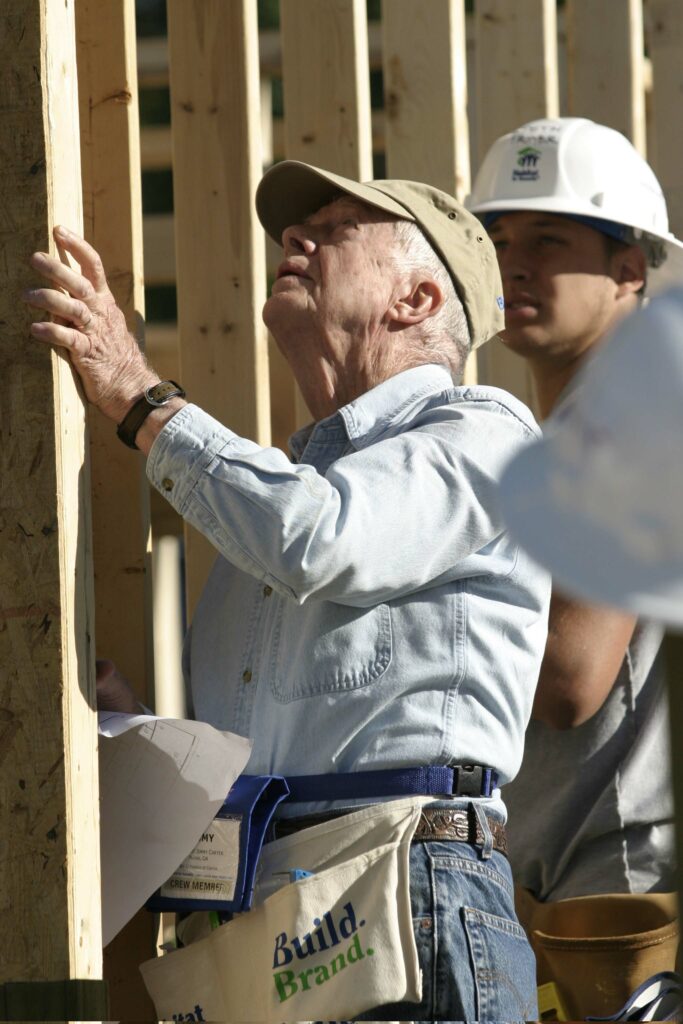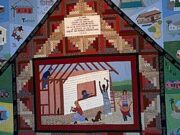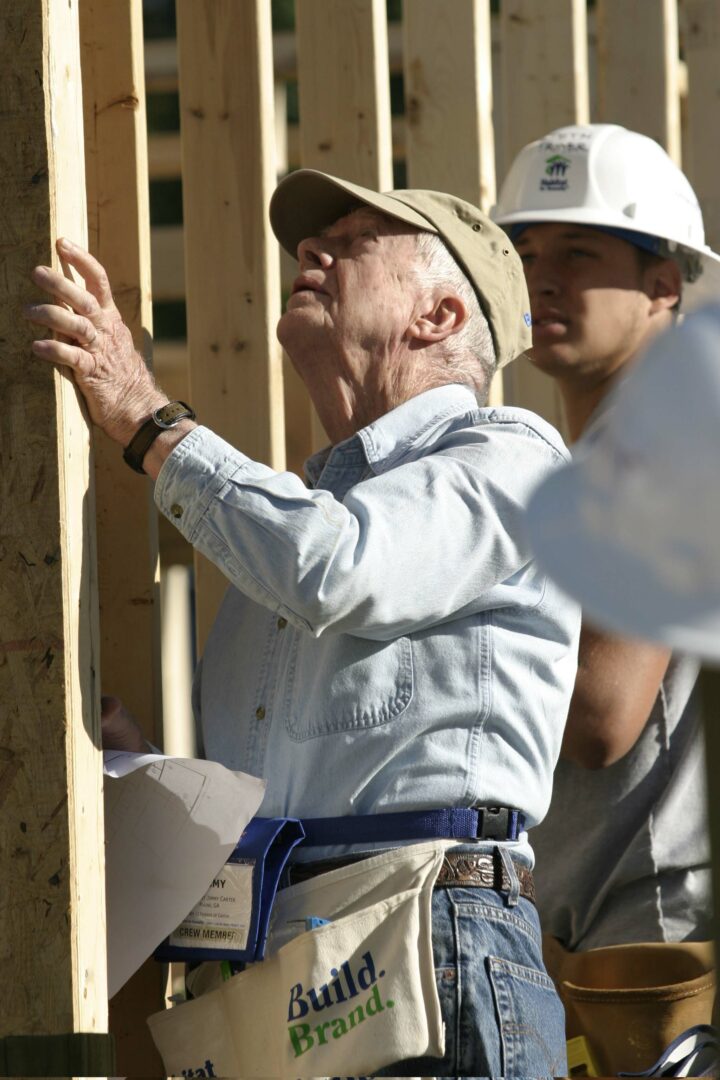Habitat for Humanity International is a nonprofit, interdenominational Christian organization that provides housing for people in need throughout the world. Founded in 1976 by Millard and Linda Fuller, Habitat has built and repaired more than 1 million houses with volunteer labor as of 2015, earning a reputation as a leader in the fight against homelessness. Habitat is headquartered in Americus.
Beginnings
The only child of an Alabama sharecropper, Millard Fuller worked odd jobs to put himself through college and law school. As a young lawyer in Montgomery, Alabama, and as part owner of a successful marketing firm, Fuller worked long hours and earned large profits. By 1964, at age twenty-nine, Fuller was a millionaire, but his work had taken a toll on his health and marriage. Recognizing that wealth had not brought them happiness, the Fullers resolved to sell their possessions and lead lives of Christian service.
In 1965 the Fullers visited Koinonia Farm, an interracial Christian community in rural Sumter County, Georgia. Their afternoon visit became a monthlong stay, as they worked alongside Koinonia’s residents and forged a close relationship with the farm’s founder, Clarence Jordan. Following two years of fundraising for Tougaloo College, a predominantly Black school in Mississippi, the Fullers returned to Koinonia in 1968. That year Fuller and Jordan established the Fund for Humanity, a nonprofit organization that financed the construction of adequate housing for people in need. Donations from friends of Koinonia created a revolving fund that covered construction costs and extended no-interest loans to potential homeowners, enabling them to make affordable mortgage payments to the fund. Mortgage payments were then used to finance the construction of more homes. The Fund for Humanity was an important early experiment in “partnership housing” and provided the inspiration for Habitat for Humanity.
Habitat International
Following Jordan’s death in 1969, the Fullers oversaw the Fund’s work until 1973, when the family moved to Mbandaka, Zaire (later the Democratic Republic of Congo) to apply the concept of partnership housing in a developing country. Although difficult, the experience ultimately confirmed the couple’s faith in their undertaking. With support from donors in the United States, the Fullers helped the local population build adequate housing for 2,000 people. After three years in Africa, the family returned to the United States in 1976. The following year they settled in Americus.
In September 1976 the Fullers hosted a retreat at Koinonia to brainstorm how best to fulfill Jordan’s vision. The idea for Habitat for Humanity was conceived during the retreat. Like the Fund for Humanity before it, Habitat would rely on what Fuller called “biblical economics”: providing no-interest loans, seeking no profit, and enlisting volunteers to work alongside homeowners. As Fuller later recalled in his memoir Love in the Mortar Joints (1980), the next eight years proved to be difficult but productive. During that time the organization achieved institutional and financial stability while undertaking housing projects in Appalachia; Johns Island, South Carolina; San Antonio, Texas; and southwest Georgia.
President Carter Lends a Hand
In 1984 Fuller traveled from the Habitat headquarters in Americus to nearby Plains to pay a visit to former U.S. president Jimmy Carter. Carter had earlier made donations to Habitat and delivered a brief speech at a fundraising meeting, but Fuller solicited Carter to do more.

Courtesy of Gregg Pachkowski and Habitat for Humanity International
Carter agreed to serve on the organization’s board, lend his celebrity to fundraising efforts, and work on a construction crew. In September of that year Carter led a work crew to Manhattan to renovate a six-story tenement with the help of nineteen local families. As Fuller had hoped, the event received national media attention and helped raise Habitat’s profile as an international philanthropic organization.
Since his first hands-on experience with Habitat in 1984, Carter has devoted a week out of each year to serve on work crews in this country and abroad. Other public officials and political candidates have followed suit, raising the organization’s visibility and enhancing its resources.
Habitat Today
In January 2005 Habitat’s board of directors dismissed Fuller in the wake of unresolved disputes. Later that year he and his wife founded a new organization, the Fuller Center for Housing. After Fuller’s departure, Jonathan Reckford assumed the position of executive director.
In the fall of 2005 Habitat was involved in rebuilding efforts on the Gulf Coast following Hurricane Katrina. The organization’s administrative headquarters moved to Atlanta in 2006, while its operational headquarters remained in Americus. In 2006 the organization included more than 2,000 active affiliates in 100 countries and by 2015 had built or repaired more than 1 million houses throughout the world, providing affordable and safe housing to more than 5 million people.
The records for Habitat are housed at the Hargrett Rare Book and Manuscript Library at the University of Georgia.






